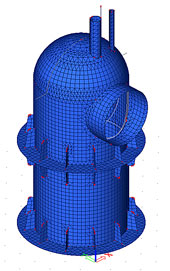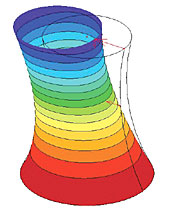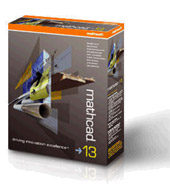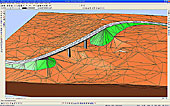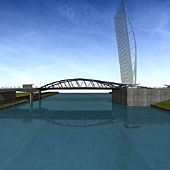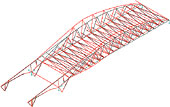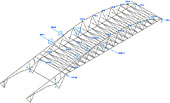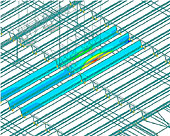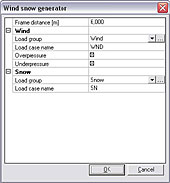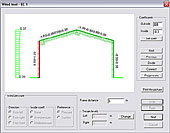|
Home | Company | Solutions | References & Markets | News & Events | Support | Contact |
||||||||||||||||||||||||||||||||||||||||||||||||||||||||||||||||||||||||||||||||||||||||
 |
 |
|||||||||||||||||||||||||||||||||||||||||||||||||||||||||||||||||||||||||||||||||||||||
| NL FR EN DE CZ | November 2005 |
|||||||||||||||||||||||||||||||||||||||||||||||||||||||||||||||||||||||||||||||||||||||
|
Dear eNews reader, |
|||||||||||||||||||||||||||||||||||||||||||||||||||||||||||||||||||||||||||||||||||||||
| SCIA Corporate News: 4D design and construction | ||||||||||||||||||||||||||||||||||||||||||||||||||||||||||||||||||||||||||||||||||||||||
 In the August edition of the Structural Engineering International magazine an interesting article was published by a well-known contractor in Germany, explaining why they decisively have chosen the 4D way of design. In the August edition of the Structural Engineering International magazine an interesting article was published by a well-known contractor in Germany, explaining why they decisively have chosen the 4D way of design. 4D means 3D modelling enhanced with the factor time, representing chronological relationships. Admitting the need to change the culture within their company, their experiences are worth to be repeated: in the early stage of every project the ratio of time needed to explain a problem, to the time needed to solve the problem is approximately 80 to 20%. Therefore communication based on 3D models with interactive imaging results in vivid discussions. Geometric incompatibilities (especially between an architectural and a structural engineering design) are identified at an early stage, improving the design quality. Planning of a construction project is a difficult science; simulation of construction sequences results in alternative options for a better and more cost-effective solution. Also  the construction progress is visualised and recorded with 4D simulation. Photo realistic images of projects are very helpful for marketing & sales especially in the bidding phase. Providing an interactive virtual 3D model to the client is a valuable asset. Even more important is the creation of cost estimates at an early stage, through generation of material lists and project tasks. Although the design process is fully 3D, certain details and information will still be supplemented in 2D, yet linked to the model. the construction progress is visualised and recorded with 4D simulation. Photo realistic images of projects are very helpful for marketing & sales especially in the bidding phase. Providing an interactive virtual 3D model to the client is a valuable asset. Even more important is the creation of cost estimates at an early stage, through generation of material lists and project tasks. Although the design process is fully 3D, certain details and information will still be supplemented in 2D, yet linked to the model.e-Construction is in full advance. SCIA contributes to it with many software tools. SCIA is the e-partner for architectural, engineering and construction Building Information Modelling. |
||||||||||||||||||||||||||||||||||||||||||||||||||||||||||||||||||||||||||||||||||||||||
| New possibilities and efficiency with design software Allplan 2005.1 | ||||||||||||||||||||||||||||||||||||||||||||||||||||||||||||||||||||||||||||||||||||||||
|
||||||||||||||||||||||||||||||||||||||||||||||||||||||||||||||||||||||||||||||||||||||||
| The market: 2 billion people to be housed from now up to 2030 | ||||||||||||||||||||||||||||||||||||||||||||||||||||||||||||||||||||||||||||||||||||||||
| Whereas about half of the world population (3 billion) lives in urban zones - including 30% in slums -, the ‘Program of the United Nations for the human settlements’ (UNO Habitat) provides in its last annual report that nearly 2 billion additional man will need housing from today until 2030.  According to an official statement of ‘UNO Habitat’ accompanying its annual report published last week, we quote: "during the next 25 years, more than 2 billion people will require housing, that is, 96.150 residences would have to be built each day, more specifically 4.000 per hour from today until 2030" According to an official statement of ‘UNO Habitat’ accompanying its annual report published last week, we quote: "during the next 25 years, more than 2 billion people will require housing, that is, 96.150 residences would have to be built each day, more specifically 4.000 per hour from today until 2030" Under the heading "Financing of urban residences", the World Report 2005 on human settlements underlines the challenges the international community must face in order to be able to finance the development of urban residences, concentrating mainly on the needs of the poorest populations and taking the objectives into account which are stated in the ‘Millennium Objectives for Development’ (MOD). If financial resources will not be invested in the development of urban residences, the two billion people who require housing in the next 30 years will fall into the trap of urban poverty and they will live under deplorable conditions, the report predicts. "The migrations of the rural zones towards the urban peripheries, where the habitat is of a summary type and unstable, will involve an accelerated extension of the shantytowns”, according to Mrs. Tibaijuka, executive director of UNO Habitat. “The shantytowns, where the natural environment is entirely degraded, are places where AIDS tends to occur“: she underlines. They are also places where the fertility rate and the infant mortality are very high. The official report indicates that in Indonesia about 85 million people, that is to say 40% of the total population, lived in an urban zone in the year 2000. However, from today until 2010, about 120 million people will live in urban zones, i.e. 50% of the population. According to forecasts of UNO Habitat, the country will need 735.000 additional housing units during the next ten years. 420.000 other residences will have to be improved. For the organization, the crises arisen by mass expulsions of the shantytowns, as was the fact in Zimbabwe, but also in Bombay, in India or in Malawi, lie within the broader scope of the crisis of the financing of urban housing in the long run. The housing shortage arrives at a moment where world economy records a continued grow rate of 4%. In spite of this growth, poverty remains a "durable problem”; 64% of the population in Africa and South Asia lives on less than 2 dollars per day, as pointed out by UNO-Habitat in its official report. |
||||||||||||||||||||||||||||||||||||||||||||||||||||||||||||||||||||||||||||||||||||||||
| ESA-Prima Win was used to compare the Belgian Standard with the Eurocode | ||||||||||||||||||||||||||||||||||||||||||||||||||||||||||||||||||||||||||||||||||||||||
|
Further on, the Eurocodes don’t give calculation rules or methods for a simplified check of the general stability. A second order calculation shows that the method with retaining forces, as prescribed by the Belgian codes, provides very conservative results. In this way, a rather big save in weight can be realised in the frame structure of the bridge. |
||||||||||||||||||||||||||||||||||||||||||||||||||||||||||||||||||||||||||||||||||||||||
| Tips & Tricks: Wind and Snow generator in SCIA.ESA PT 5.2 | ||||||||||||||||||||||||||||||||||||||||||||||||||||||||||||||||||||||||||||||||||||||||
 One of the most tedious tasks to input are the wind and snow loads for a construction. This is mainly caused by the fact that wind from both directions needs to be modelled, overpressure, under pressure, ... One of the most tedious tasks to input are the wind and snow loads for a construction. This is mainly caused by the fact that wind from both directions needs to be modelled, overpressure, under pressure, ...The latest version, SCIA.ESA PT 5.2 can generate the wind and snow load cases automatically on the frames of the structure. First of all, a single load case is needed, for example the self-weight of the structure. Next, the This generator will automatically generate all the necessary load cases and put them in exclusive load groups. One by one the load cases are generated and can be edited by the user: The load case manager now shows the following: It is clear that this new generator provides for a quick and easy input of the wind and snow loads on the construction. |
||||||||||||||||||||||||||||||||||||||||||||||||||||||||||||||||||||||||||||||||||||||||
| About this SCIA eNews | ||||||||||||||||||||||||||||||||||||||||||||||||||||||||||||||||||||||||||||||||||||||||
|
||||||||||||||||||||||||||||||||||||||||||||||||||||||||||||||||||||||||||||||||||||||||
|
|
||||||||||||||||||||||||||||||||||||||||||||||||||||||||||||||||||||||||||||||||||||||||
|
SCIA Group NV - Industrieweg 1007 - B-3540 Herk-de-Stad Tel: +32 (13) 55.17.75 - Fax:+32 (13) 55.41.75 |
Copyright
© 2005 SCIA Group nv |
|||||||||||||||||||||||||||||||||||||||||||||||||||||||||||||||||||||||||||||||||||||||
